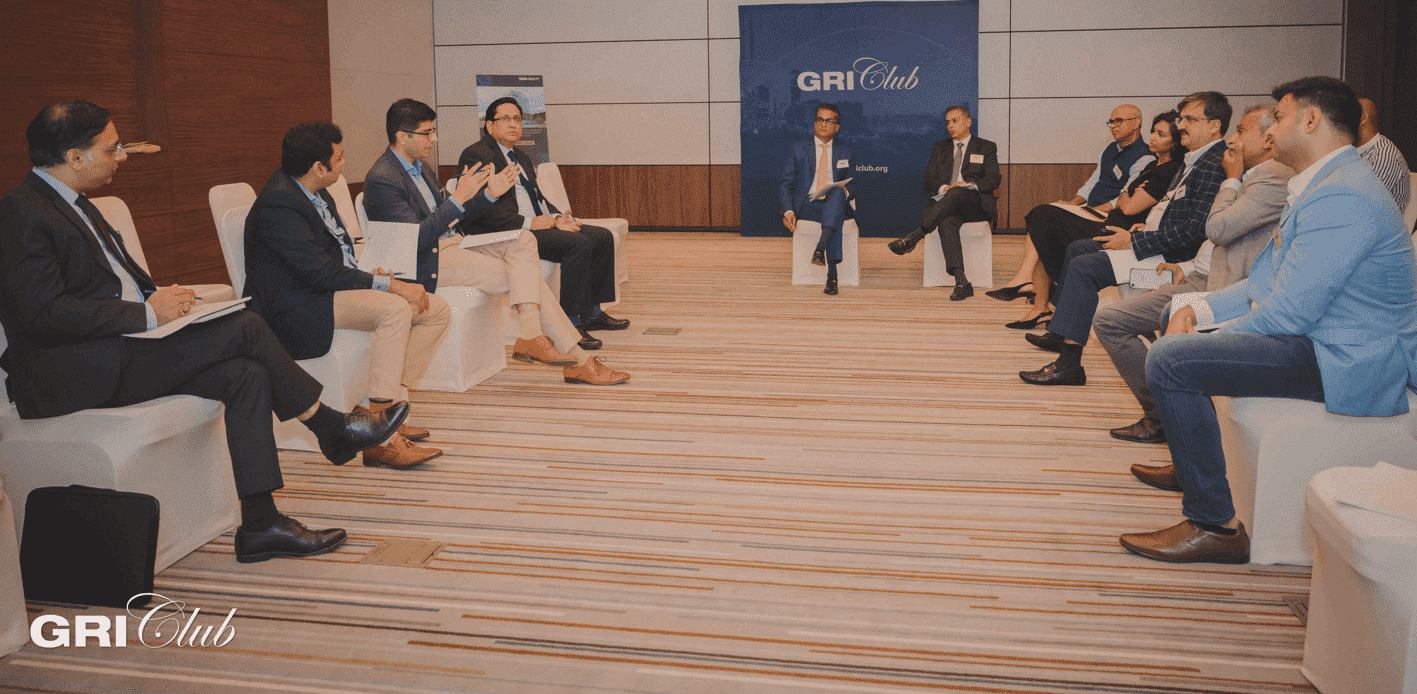 GRI Club
GRI ClubFuture Proofing Real Estate in India
Senior executives address key economic risks and opportunities caused by climate change
Experts from Indian real estate came together at GRI Club’s ‘Future Proofing Real Estate’ to discuss happenings in the sector. These discussion leaders provided significant insight on opportunities and challenges that the industry should look out for.
Moderated by Sanjay Dutt, MD & CEO, Tata Realty and Ramesh Nair, CEO, Colliers, the session was informative and perceptive, to say the least. The meeting was also attended by several club members across the Indian residential real estate industry.
Read below the Club Meeting's summary containing the main topics discussed.
Designed to foster deal flow and engage with peers, the event was held on 29th September 2022, at Jio World Convention Centre, Mumbai. It was hosted by Tata Realty.
After a lull caused due to the pandemic, a number of sub-sectors right from office spaces to warehouses are witnessing demand and increased rates, a positive sign that the industry is landing on solid ground once again. While most occupiers are welcoming flex and green spaces, some are still opting for glass boxes. While the sector is on the path to further progress, it is not without its challenges. The definition of ‘green’ is still being streamlined and 43% of tenants continue to be in non-green buildings. Data centre co-location is aiding in reduced energy consumption, a new-age solution, but collaboration like this between tech and sustainability needs to be worked upon some more.
Though efforts are being made for green initiatives to be implemented, renewable power regulations need to be put in place to allow distribution of power in all states. Currently, a number of states don’t allow 3rd party power supply; cement, steel, and power remain the highest contributors to greenhouse gases. Land and construction costs have gone up, but rent has stayed the same. On a global level, research shows that green buildings command 15% higher rent and 20% higher valuations, but the same research for Indian assets remains limited.
The discussion also led to the fact that green buildings can now get debt at a lower cost; 10-30 basis points and even 1% by IFC. And in an advanced move, most RFPs from large occupiers have some ESG components and sustainability goals inbuilt. Many occupiers are even progressing towards electric vehicles from traditional transport. The industry leaders present emphasized on solutions that need to be identified for over-designing that leads to wasted infrastructure and increased costs, as well as providing assistance to struggling developers whose assets aren’t managed well.
For better planning and solutions, the emissions need to be calculated on the whole lifecycle of the building. As these stakeholders of the real estate industry work towards ‘future proofing’ the industry, the discussion leaders present agreed that construction techniques need to improve, probably more steel and pre-cast concrete, among others. And distributed micro-grids along with district cooling that will reduce HVAC costs are contemplative solutions to future needs.
The enhanced growth and progress of the sector can be seen in the improved EDGE ratings. With detailed standardizing and digitizing initiatives along with adoption of cutting-edge solutions, the real estate sector will be future-ready.
- Article credits: Tata Realty.
Check out India GRI 2022's agenda!
About GRI Club